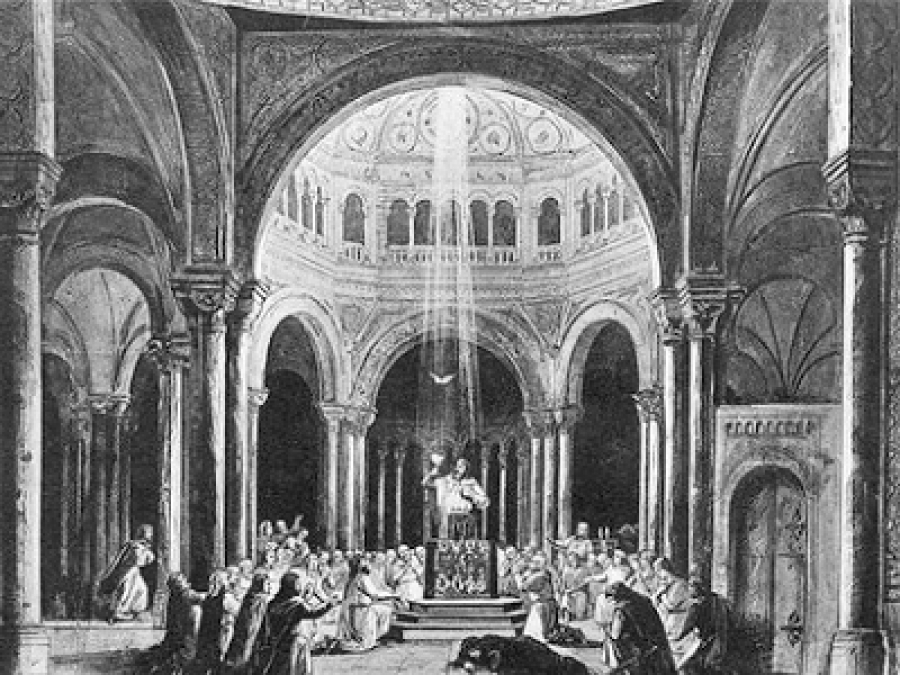“In “PARSIFAL” – this last work of his, Wagner tried to be less severe and autocratic in his attitude to music. Here we shall not find the exhausting, obtrusive representation of Tristan’s pernicious passion, nor Isolde’s insane almost animal wails, nor the verbose comments on Wotan’s inhuman cruelty. Not another page by Wagner reaches the beauty of the introduction to Act III and the episode “Good Friday”. In the whole opera, the sounding of the orchestra is unexpected, unique, noble and powerful. Before us is one majestic “monument of great Music”. These are words by Claude Debussy, who admits that he loved not so much the characters of this “mystical drama”, but its “decorative side”.
On the opera, conceived and conformable to the acoustics and the technique of the Bayreuth theatre, Wagner started working hard since 1877, but the first sketches for the libretto were made still in 1857. After the premiere, the copyrights for the production were held entire thirty years by Wagner’s theatre-temple, so that abroad the opera saw the light of day not until 1914 in Italy. And this ban increased the interest to this “mysterious work”, about which were written many pages.
In one of his letters to his patron and friend Ludwig II of Bavaria, Wagner wrote: “How is it possible to produce a spectacle, in which to be presented openly the most sublime sacraments of Christian religion, at that on stages, on which reigns frivolity and even shamelessness? This is why I am going to produce it only in my theatre in Bayreuth. Only there and nowhere else “Parsifal” may be performed even after my death!”
In 1913, monopoly copyright about the production was cancelled by Wagner’s widow Cosima. This was a wise decision, because the myth about Wagner’s festival like all myths, however, had one important defect – the absence of development. George Bernard Shaw asserts that the first productions in Bayreuth were not at all wonderful. The vocal side was badly defended, some of the singers were fat like beer barrels. The feminine costumes were shy and stupid. But not a single one of Wagner’s operas did sound so good there, like “Parsifal”.
What composes the base of the opera, its literature origin and plot, attains a special brightness in the light of the author’s musical ideas. The essence of these ideas becomes visible most distinctly in the description of the festive ceremonies of the Grail, in the image of the sparkling chalice, of the light, descending from the mysterious heights, illuminating the righteous Christians, and also in the chorales of the knights, something unprecedented till then in European music, preceding the orchestra of Berlioz, Brahms’s Requiem, close to Liszt’s poems and Giovanni Gabrieli’s music...
Here there is fear of the carnal sins. And if according to Schopenhauer the carnal pleasure is an illusion for the human being, that he or she acts for his/her own welfare, while actually he or she satisfies the needs of the human kind”, for him, “Wagner’s disciple” the sex hides still more serious dangers. This is the curse of love, tormenting the human being from the end of the 19 century, fast to exhaustion, to hysteria. That way Kundry, tortured by her instinctive impulses, is rejected by Parsifal. The relations between the sexes here reach a high tension, which shows not only the psychological fear or physical pathology, but expresses also the psychic experiences of the human being. Of each one of us!
This opera by Wagner, about which many people assert that it was more intended for the ear, than for the eyes, actually possesses a strong theatrical power, a conquering stage influence.
Gaetano Marchesi, Milano
